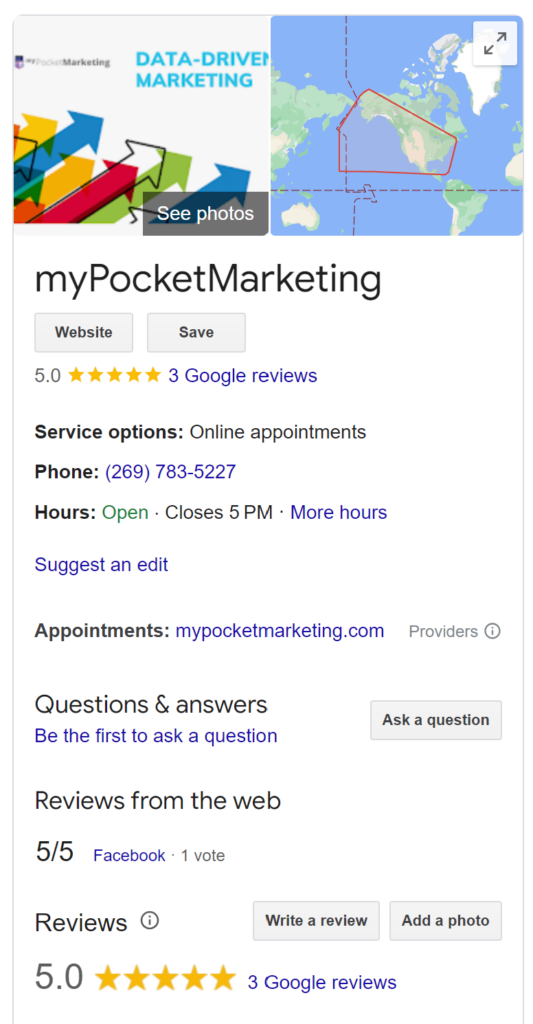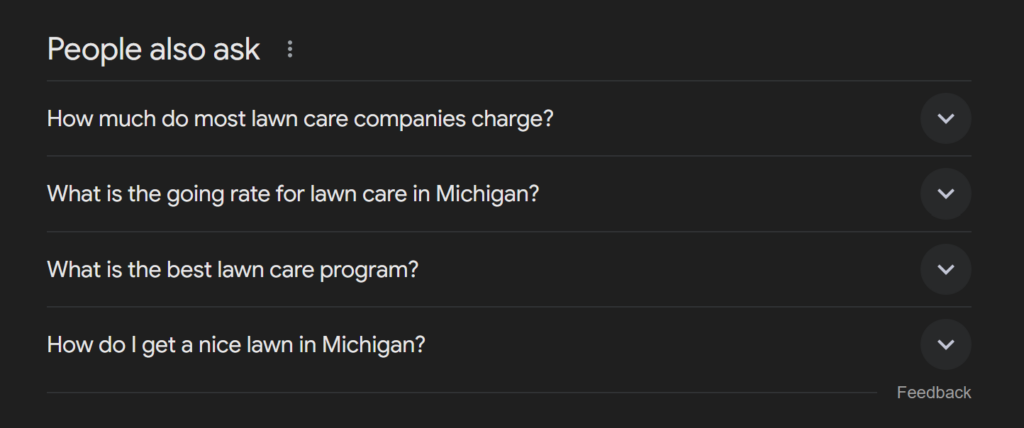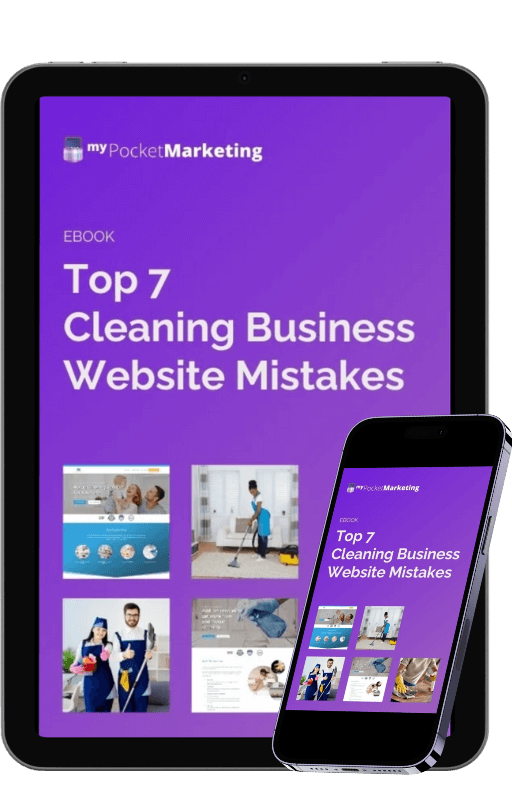In today’s digital world, where people rely heavily on search engines to find the products and services they need, local businesses face a unique challenge: standing out in a crowded online space. This is where Local SEO (Search Engine Optimization) comes into play.
Local SEO is the practice of optimizing your online presence to improve your visibility in local search results. It’s about letting potential customers in your area know that you exist and that you’re the perfect solution to their needs.
Why Should You Care About Local SEO?
For home services businesses, like home cleaning, a strong local SEO presence is crucial for attracting new customers and driving growth. Here are just a few reasons why local SEO matters:
- Increased Website Traffic: When your business ranks higher in local search results, you’re more likely to be seen by potential customers searching for services in your area. This translates to more website traffic and more opportunities to convert visitors into paying customers.
- Generate More Leads and Sales: Local SEO can help you attract qualified leads who are actively searching for businesses like yours. This can lead to increased sales and revenue for your company.
- Boost Brand Awareness: By optimizing your online presence, you’re establishing your brand as a local authority. This increased visibility helps build trust and recognition within your community.
In today’s competitive landscape, neglecting local SEO can put your business at a significant disadvantage. By implementing the strategies outlined in this guide, you can take control of your local search ranking and attract more customers through your doors.
Ready to unlock the power of local SEO? Let’s dive into the essential steps to get you started!
What is Local Search Engine Optimization?
As passionate cleaning business owners, you understand the importance of building a strong local presence. But in today’s digital world, just having a storefront or offering top-notch services isn’t enough. To attract new customers and thrive in a competitive market, you need to ensure your business shows up when people in your area search for cleaning services online. This is where Local SEO (Search Engine Optimization) comes in.
Local search ranking refers to the position your cleaning business occupies in search results displayed to users in your local area. When someone searches for “cleaning services near me” or uses specific keywords like “carpet cleaning [your city],” Google and other search engines consider various factors to determine which businesses appear first. These factors include:
- Relevance: How well your business information (name, services offered, location) matches the user’s search query.
- Distance: Search engines prioritize businesses closest to the user’s location.
- Prominence: This considers factors like online reviews, website authority, and citations (mentions of your business name and address across the web).
By optimizing your online presence for local search, you can increase your visibility and attract more potential customers who are actively looking for cleaning services in your area.
Challenges for Local SEO Beginners:
While local SEO offers significant benefits, Sam and Alex, you might face some initial challenges:
- Limited Time: Running a successful cleaning business already keeps you busy. Dedicating time to learn and implement SEO strategies can be a hurdle.
- Technical Knowledge: SEO can involve technical aspects like keyword research and website optimization. If you’re new to SEO, these concepts might seem daunting.
- Competition: The local cleaning market might be competitive, making it difficult to stand out in search results.
However, don’t let these challenges discourage you! The good news is that local SEO can be approached gradually, and even small improvements can make a big difference. In the next section, we’ll provide a roadmap for getting started with local SEO, addressing these challenges and empowering you to take control of your local search ranking.
Your Google Business Profile: The Cornerstone of Local SEO
When it comes to local SEO for your cleaning business, there’s one crucial element you can’t afford to neglect – your Google Business Profile (GBP). Think of it as your digital storefront, the first impression potential customers get when searching for cleaning services in your area. A well-optimized GBP can significantly boost your local search ranking, attract more qualified leads, and ultimately help you grow your business.
Optimizing Your Google Business Profile:
Claiming and verifying your GBP listing is the first step. Head over to Google Business Profile and follow the simple instructions. Remember, consistency is key! Ensure the name, address, and phone number you use during verification exactly match how your business information appears on your website and other online directories (NAP consistency).
Once you’ve claimed your GBP, it’s time to fill out your profile completely. Here’s a breakdown of the key details to include:

- Business Name, Address, and Phone Number: This seems like a no-brainer, but double-check for accuracy!
- Service Categories: Select the cleaning service categories that accurately represent what you offer (e.g., residential cleaning, carpet cleaning, window cleaning).
- High-Quality Photos: Showcase your team, cleaning services in action, and happy customers with high-resolution photos. This builds trust and credibility.
- Compelling Business Description: Don’t just list your services! Craft a description that highlights your unique selling points, experience, and commitment to serving your local community. Sprinkle in relevant local keywords to improve search ranking.
- Service Area: Clearly define the geographic area you serve, including neighborhoods or zip codes.
- Opening Hours: Ensure your business hours are accurate and up-to-date, especially if you offer flexible scheduling.
Crafting a Compelling GBP Description:
Your GBP description is your chance to shine! Write a clear, concise, and engaging description that entices potential customers. Highlight what sets your cleaning business apart from the competition. Don’t forget to weave in relevant local keywords to enhance search visibility.
Consider including a call to action (CTA), like “Get a Free Quote Today” or “Schedule Your Cleaning Now” to encourage users to contact you directly.
Engaging with Your GBP:
Your GBP shouldn’t be a static online presence. Regularly manage your profile and interact with potential customers to maximize its effectiveness. Here are some ways to keep your GBP dynamic:
- Respond to Reviews Promptly: Positive reviews build trust and encourage others to choose your services. Respond to all reviews, thanking customers for their positive feedback and addressing any concerns raised in negative reviews professionally.
- Showcase Your Work with Photos and Videos: Add high-quality photos and videos showcasing your cleaning expertise and the sparkling results you deliver. This can be before-and-after shots, pictures of your team in action, or short videos highlighting your cleaning process.
- Leverage Google My Business Posts: We’ll explore this feature in more detail later, but know that you can use Google My Business Posts to keep your profile fresh and announce special offers or promotions.
By following these steps and consistently managing your Google Business Profile, you’ll be well on your way to establishing a strong local SEO foundation and attracting more customers through your doors.
Remember, local SEO is an ongoing process. Regularly monitor your GBP performance, keep your information updated, and engage with your audience to maintain a top spot in local search results.
Unleashing the Power of Local Keywords: Attract Local Customers
Sam and Alex, in today’s digital world, potential customers searching for cleaning services often turn to local search engines. To be at the forefront of their search results, you need to understand what they’re looking for and how to optimize your website to be seen. This is where local keywords come into play.
Local keywords are search terms that include a geographic location, like your city, neighborhood, or surrounding area. By strategically incorporating these keywords throughout your website, you signal to search engines that your cleaning business caters to local customers.
But what exactly are people searching for? Understanding local search intent is crucial. Local search intent refers to the reason behind a user’s local search query. There are three main types:
- Informational: Users are seeking information, like cleaning tips or comparisons. (e.g., “tips for deep cleaning carpets”)
- Transactional: Users are ready to make a purchase or book a service. (e.g., “book a cleaning service near me”)
- Navigational: Users know what business they want and are looking for contact information or directions. (e.g., “address of the closest cleaning company”)
By understanding these different types of intent, you can choose local keywords that effectively target each stage of the customer journey.
Building Your Local Keyword Arsenal
Now that you know why local keywords matter, let’s explore how to find the right ones for your cleaning business. Here are some effective strategies:
- Free & Paid Keyword Research Tools: There are various tools available to help you with keyword research. You can start with free options like Google Keyword Planner (though keep in mind it has limitations on data without spending on ads). Paid tools like Ahrefs, SEMrush, and Moz offer more in-depth data, including local search volume, which can be a valuable asset.
- Focus on Local Keywords: Make your location a prominent part of your keyword strategy. Target keywords that specifically mention your city, neighborhood, or the areas you serve. Examples include “[your service] in [your city]” or “[your city]’s best cleaning service.”
- Embrace Long-Tail Keywords: Don’t underestimate the power of long-tail keywords! These are more specific search phrases, often with lower competition. For example, instead of just targeting “cleaning service,” consider “late-night deep cleaning services near [your zip code]” or “move-out cleaning services [your city].” These longer phrases can be highly effective at attracting customers with specific needs.
- Analyze Your Competitors: Take a peek at what your competitors are doing! See what keywords they rank for in local searches. Tools like SEMrush or Similarweb can help you uncover this information. While you don’t want to simply copy their strategy, analyzing their keyword choices can provide valuable insights.
- Leverage Search Engine Insights: Search engines themselves can offer a treasure trove of keyword ideas. Pay attention to search query suggestions (autocomplete) that appear as you type in keywords related to your cleaning services. Additionally, explore the “People Also Ask” section on relevant Google search result pages for even more inspiration.

- Unlock Customer Insights: Don’t forget the valuable information your own website and customers can provide! Website analytics tools like Google Search Console can reveal the search terms people use to find your website organically. This can be a goldmine for understanding your existing traffic and potential areas for improvement. Additionally, consider talking directly to your customers and asking them how they found your business. Their responses might surprise you and provide valuable clues about the search terms they use.
By implementing these strategies, you’ll build a comprehensive list of local keywords that target the right audience and effectively represent your cleaning services.
Remember, understanding local search intent and building a strong local keyword list are the cornerstones of attracting local customers through your website. In the next section, we’ll explore how to integrate these keywords seamlessly into your website content and optimize your title tags and meta descriptions for local search success.
Power Up Your Local SEO: Optimizing Your Website Content
Remember, the local keywords you meticulously researched in the previous section are the key to unlocking local SEO success. Now, let’s integrate them seamlessly into your website content to attract more customers in your area.
Integrating Local Keywords Naturally
Don’t just shove keywords in – weave them in! Conduct thorough keyword research (consider tools like Google Keyword Planner or local SEO tools) to identify the search terms your target audience uses. Once you have this list, focus on incorporating those keywords that include your city, neighborhood, or surrounding area. Examples like “[your service] in [your city]” or “best [product category] near [your zip code]” will resonate with local searchers.
The key is to make this keyword integration natural. Your website content should be informative, engaging, and written with a smooth reading flow in mind. Here are some ways to achieve this:
- Target Different Pages: Think strategically about where to use which keywords. Service pages can target “[service] + city” to convert local leads, while blog posts can focus on “[local interest] + tips” to attract potential customers with informative content.
- Examples of Natural Keyword Integration:
- Headers & Subheadings: Include relevant keywords in your H1 tags (main page title) and H2 subheadings throughout your content. This helps search engines understand your content’s focus and can improve click-through rates from search results.
- Body Text: Don’t force keywords – let them flow naturally as you explain your services, highlight your expertise, or showcase testimonials from happy customers in your local area.
- Calls to Action: Craft compelling calls to action (CTAs) that incorporate local keywords and encourage conversions. For example, “Call us today for a free [service] consultation in [your city]!”
- Location Pages (if applicable): If you have multiple service areas, consider creating dedicated location pages for each. These pages should be optimized with location-specific details and keywords to effectively target potential customers in those areas.
Go Beyond Text with Local Context
Text isn’t the only way to showcase your local expertise! Here’s how to leverage other content formats:
- Images & Videos: Optimize your image alt tags and video descriptions with relevant keywords to improve search visibility. Localize your visuals as well – consider including images of your team serving customers in your area or showcasing local landmarks.
- City-Specific Content: Create blog posts or infographics that address the needs and interests of your local audience. For instance, a blog post titled “Top [Local Event] Tips for [Your City]” can demonstrate your local knowledge and establish you as a trusted resource.
Remember:
- Quality over Quantity: Focus on creating high-quality content that informs and engages your local audience. Keyword stuffing hurts readability and can negatively impact SEO.
- Maintain a Consistent Voice: While using keywords strategically, ensure your brand voice shines through. Let your personality resonate with your local audience and build trust.
By following these guidelines, you’ll transform your website content into a powerful local SEO magnet, attracting more qualified leads and propelling your business to the forefront of local search results.
Building Your Local Powerhouse: Citations, Listings, and Reviews
We’ve optimized your website for local search, but that’s just one piece of the puzzle. To truly dominate local SEO, you need to establish a strong online presence beyond your website. Here’s how to build your local powerhouse and attract more customers through consistent and strategic online visibility.
- Claim and Optimize Your Google My Business Listing: Consider Google My Business (GMB) your local SEO crown jewel. Claim your GMB listing (or create one if you haven’t already), fill out all information accurately, and optimize it with relevant keywords and high-quality photos showcasing your cleaning services. A well-maintained GMB profile is essential for ranking high in local search results and building trust with potential customers who can see your reviews, ratings, and contact details directly in search.
- Citations Reign Supreme: Citations are mentions of your business name, address, and phone number (NAP) across various online directories and business listings. They act as digital votes of confidence for your local presence. Focus on high-quality, relevant directories in your niche and local area. Ensure your NAP information is absolutely consistent across all platforms – any discrepancies can confuse search engines and hinder your local SEO efforts. There are many free and paid tools available to help you find and manage your citations.
- Harness the Power of Reviews: Positive reviews on Google My Business, Yelp, and other reputable platforms are gold for local SEO. Not only do they influence search ranking, but they also build trust with potential customers who rely on social proof when making decisions. Encourage satisfied customers to leave reviews by politely requesting them after completing a service or project. Be sure to respond to all reviews, both positive and negative, in a professional and timely manner. Thank those who leave positive feedback and address any concerns raised in negative reviews.
- Engage on Social Media: Don’t underestimate the power of social media for local SEO. Build a social media presence on platforms popular with your local audience. Share informative content related to your cleaning services and local area, engage with followers by responding to comments and messages, and participate in relevant local conversations. This social media engagement demonstrates your local involvement and positions you as a trusted resource in the community.
By implementing these strategies, you’ll establish a strong online presence that acts as a magnet for local customers. Remember, consistency is key! Regularly update your GMB profile, manage your citations, and keep your social media channels active to solidify your local SEO dominance and attract a steady stream of qualified leads.
Tracking and Measuring Your Local SEO Success: A Data-Driven Approach
Just like any successful marketing strategy, local SEO thrives on ongoing monitoring and adjustments. By tracking your performance and analyzing data, you can identify what’s working, pinpoint areas for improvement, and refine your local SEO strategy for maximum impact. Here’s how to dive into the key metrics and transform them into actionable insights.
Local SEO Performance Tracking Tools:
Several valuable tools can help you monitor your local SEO performance:
- Local SEO Rank Tracking Tools: Paid local SEO rank tracking tools provide detailed reports on your local search ranking for various locations and keywords. These tools can be particularly useful for monitoring your progress over time and keeping an eye on your competitors’ rankings.
- Website Analytics Tools: Your website analytics platform, like Google Analytics, is a goldmine of information. It allows you to track website traffic sources, including local traffic. By analyzing these trends, you can gauge the effectiveness of your SEO efforts in attracting local visitors. Additionally, Google Analytics can reveal valuable insights into user behavior on your website, helping you further optimize your content for local audiences.
- Social Media Analytics: Don’t underestimate the power of social media analytics! Tools offered by major social media platforms can provide insights into your audience demographics. This can help you understand your local reach and tailor your social media presence to resonate with your target audience in your area.
Analyzing Your Local SEO Performance:
Now, let’s delve into the key metrics that will shed light on your local SEO performance:
- Metrics to Monitor:
- Local Pack Rankings: The local pack, also known as the Google Maps pack, is that prominent section at the top of search results pages for local searches. It typically displays a map with three business listings (though the number can vary). Earning a top-three position in the local pack for your target keywords is crucial for local visibility.
- Organic Rankings: Monitor your website’s ranking in organic search results for relevant local keywords. This metric helps you understand how well your website content is optimized to attract local searchers.
- Website Traffic: Analyze your website traffic, specifically focusing on local traffic sources. Look for trends in website visits and see if your SEO efforts are driving more local visitors to your site.
- Google Business Profile Insights: If you’ve claimed and optimized your Google My Business (GMB) listing, you have access to valuable insights. This data reveals how users are interacting with your listing, including profile views, website clicks generated from your GMB profile, and even call requests initiated directly through your listing.
- Customer Reviews and Ratings: The number and sentiment of customer reviews on Google My Business and other platforms like Yelp hold significant weight. Positive reviews not only build trust with potential customers but also contribute to your local SEO ranking.
- Interpreting the Data:
- Rankings: A top-three ranking in the local pack and strong organic rankings for local keywords indicate a healthy local SEO performance. Lower rankings suggest there’s room for improvement. Analyze your keyword strategy, content quality, and backlinks to identify areas for optimization.
- Website Traffic: Increasing website traffic, especially local traffic, signifies that your local SEO efforts are attracting potential customers in your area. Stagnant or declining traffic might indicate insufficient local optimization. Refocus on local keyword research and tailor your content to cater to local search intent and user needs.
- GMB Insights: High profile views and clicks from your GMB listing show users are finding you in local searches. An increase in call requests suggests your listing is converting viewers into potential customers. If these numbers are low, consider enhancing your GMB profile with high-quality photos, detailed descriptions, and ensuring your category optimization is accurate.
- Reviews: A steady stream of positive reviews strengthens your local SEO and builds trust with potential customers. Negative reviews, while not ideal, can provide valuable insights into areas for improvement in your service or customer experience. Always address negative reviews promptly and professionally, outlining steps you’re taking to address the concerns raised.
Identifying Improvement Areas:
By analyzing your data and interpreting the metrics, you can pinpoint specific areas for improvement:
- Low Rankings: Analyze your keyword usage, content quality, and backlinks. Consider what your competitors are doing and use that knowledge to optimize your website and GMB listing accordingly.
- Limited Local Traffic: Focus on refining your local keyword research and content creation. Ensure your website content caters to local search intent and addresses the specific needs and interests of your local audience.
- Underperforming GMB Listing: Enhance your GMB profile with high-quality photos, detailed descriptions that showcase your unique selling points, and ensure your category optimization is accurate. Actively encourage customer reviews and respond to all feedback, both positive and negative, in a professional and timely manner.
Expanding Your Local Marketing Arsenal: Beyond SEO
While SEO is crucial for local businesses, a well-rounded marketing strategy goes beyond search engines. By diversifying your tactics, you can reach a wider local audience and establish yourself as a trusted community player. Here’s how to expand your local marketing arsenal and connect with potential customers in your area:
Leveraging Digital Ads for Local Reach:
- Targeted Online Advertising: Pay-per-click (PPC) advertising allows you to target qualified local leads actively searching for products or services like yours online. Local PPC campaigns let you define specific locations and demographics, ensuring your ads reach the right audience at the right time. This targeted approach allows you to get your business in front of potential customers who are most likely to convert.
- Social Media Advertising Gets Local: Don’t underestimate the power of social media advertising platforms for reaching local customers. These platforms offer advanced targeting options based on demographics, interests, and even location. You can create targeted social media campaigns to promote special offers, local events, or new product launches to potential customers in your area.
Engaging Your Local Community:
- Building Relationships, Building Trust: Investing in your local community goes a long way. Sponsoring local events, volunteering your time or expertise, or participating in local business associations allows you to build relationships with potential customers and community members. This fosters brand awareness, goodwill, and establishes you as a trusted member of the community, leading to increased local support.
- Partnerships for Growth: Networking with other local businesses and building strategic partnerships can significantly expand your local reach and customer base. Collaborate on events, promotions, or cross-referrals to tap into each other’s audiences and strengthen your local presence.
Traditional Local Marketing:
Depending on your target audience and budget, traditional local marketing tactics like print advertising in local publications or sponsoring local radio shows might still be relevant to consider. However, be sure to weigh the potential reach and cost-effectiveness of these tactics against your overall marketing goals.
A comprehensive local marketing strategy combines online and offline tactics to maximize local visibility, customer engagement, and brand awareness. Experiment with different approaches, analyze the results, and refine your strategy to achieve optimal impact within your local community. Remember, a well-rounded local marketing strategy goes beyond just SEO, allowing you to build stronger connections with potential customers and establish yourself as a local authority.
Your Ongoing Journey of Local SEO
Local SEO is a powerful tool for attracting local customers, but it’s important to remember it’s a marathon, not a sprint. Search engine algorithms and user behavior are constantly evolving, so ongoing effort is required to maintain optimal results.
Luckily, there’s a wealth of resources available to help you on your local SEO journey. Moz’s Beginner’s Guide to Local SEO and Google’s Search Central guide for businesses are excellent starting points.
Don’t wait to take action! By implementing the strategies outlined in this guide, you can take control of your local search ranking and attract more qualified leads who are ready to become loyal customers. So, what are you waiting for? Start optimizing your local presence today!
Local SEO Checklist: Your Roadmap to Local Search Success
Conquering local SEO might seem daunting, but with this checklist, you’ll have a clear roadmap to get you started. Remember, consistency and ongoing optimization are key to long-term local search success. Let’s dive into the essential tasks that will lay a strong foundation for your cleaning business:
Essential Steps:
- Claim and Verify Your Google Business Profile (GMB): This is your golden ticket to local SEO! Head over to Google Business Profile and follow the simple steps to claim and verify your listing. Once verified, complete your profile thoroughly with accurate information, including:
- Business name, address, and phone number (NAP)
- Service categories relevant to your cleaning services
- High-quality photos showcasing your team, cleaning services, and happy customers
- A compelling description highlighting your unique selling points and local focus
- Your service area, including neighborhoods or zip codes you serve
- Accurate opening hours
- NAP Consistency is Key: NAP stands for Name, Address, and Phone Number. Ensure this information is absolutely consistent across your entire online presence. This includes your website, social media profiles, online directories, and anywhere else your business information appears online. Inconsistent NAP information confuses search engines and can hurt your local search ranking.
- Get Listed on Top Directories: Don’t underestimate the power of online directories! Aim to get listed on 5-10 high-authority directories relevant to cleaning services in your area. Here are some popular options to consider:
- Yelp
- Bing Places
- Angie’s List
- HomeAdvisor
- Industry-specific directories (e.g., Local Chamber of Commerce cleaning business listings)
These three essential steps are crucial for establishing a strong foundation for your local SEO efforts. The following strategies can further enhance your local search visibility:
Additional Strategies:
- Optimize Your Website for Local Search: Ensure your website is mobile-friendly, loads quickly, and incorporates relevant local keywords throughout your content, including title tags, meta descriptions, and service pages.
- Build Local Backlinks: Backlinks are essentially links from other websites pointing to yours. Acquiring backlinks from high-quality local websites like news outlets, chambers of commerce, or local bloggers can significantly improve your local SEO ranking.
- Maintain Active Social Media Profiles: Social media is a fantastic way to connect with your local community. Create engaging profiles on platforms like Facebook or Nextdoor, share cleaning tips, showcase customer testimonials, and participate in relevant local conversations.
- Manage Reviews and Respond Promptly: Positive online reviews are gold for local SEO! Encourage satisfied customers to leave reviews on your Google Business Profile and other platforms you’re listed on. Respond to all reviews promptly and professionally, thanking customers for their positive feedback and addressing any concerns raised in negative reviews.
- Monitor and Analyze Your Results: Don’t set it and forget it! Regularly track your local search ranking and website traffic using analytics tools. This will help you measure progress, identify areas for improvement, and refine your local SEO strategy over time.
By following this roadmap and consistently optimizing your online presence, you’ll be well on your way to attracting more local customers and achieving local SEO success for your cleaning business!



